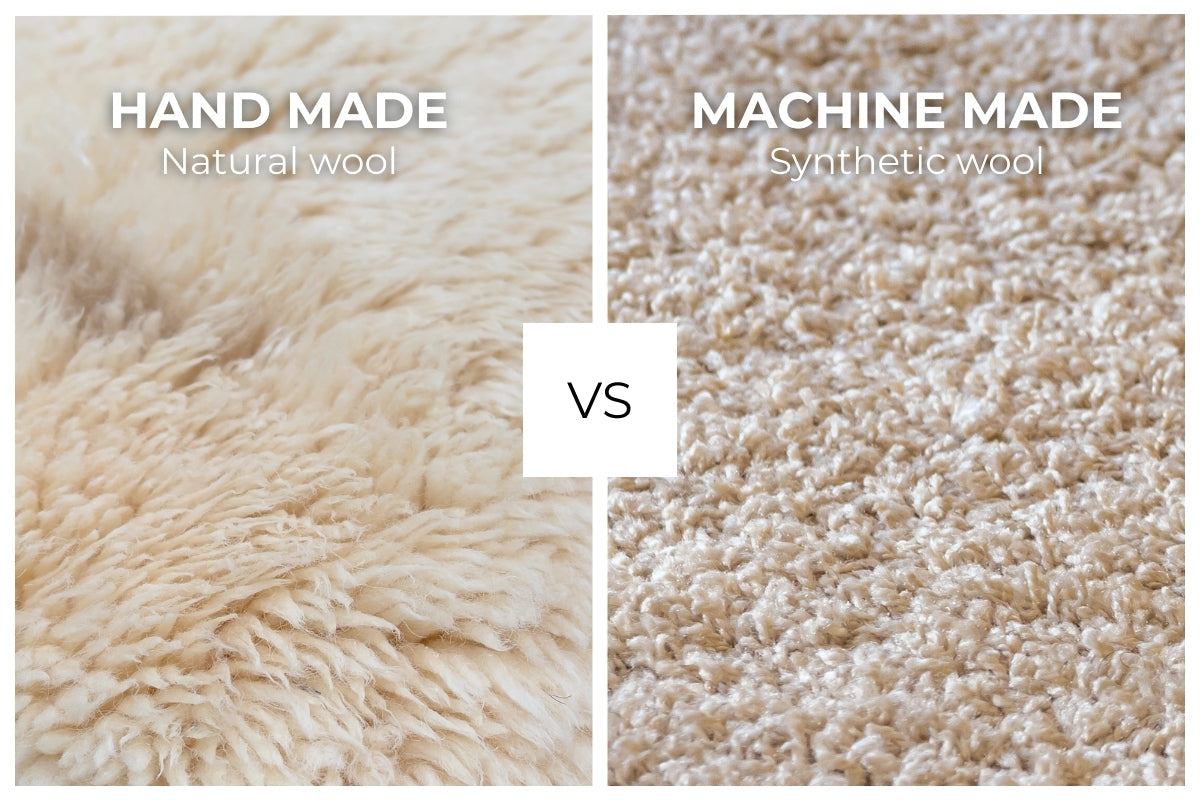The short answer
A handmade rug is a one-of-a-kind work of craft that lasts longer, ages better, uses healthier materials, can be repaired, and keeps its value. A machine-made rug is a product; a handmade rug is a piece you live with for decades.
1) Uniqueness & soul (not copies, originals)
Machine looms can only reproduce patterns. Hand-knotted or hand-woven rugs carry the touch of the maker tiny variations in knot tension, color, and line that give movement and depth. Those “imperfections” are exactly what make a space feel warm and designed rather than staged.
2) Longevity, repairability, and true cost
A good handmade rug is built knot by knot on natural warps. With proper care it can be washed, re-edged, re-fringed, and even re-knotted—restored rather than replaced. Many machine-made rugs rely on latex backings and heat-set fibers; once layers separate or edges fray, they’re rarely repairable and head to landfill.
3) Materials & indoor air quality
Handmade rugs are typically pure wool. It is naturally flame-resistant, hypoallergenic for most people, and regulates humidity. Machine-made pieces often use synthetics (polypropylene, nylon, polyester) and adhesives that can off-gas.
4) Comfort, weight & performance
High-quality hand-knotted piles feel denser and springier. More knots = more yarn = more weight, better sound absorption, and real thermal comfort. Machine-made pile can feel uniform but thin; it tends to flatten faster in traffic lanes.
5) Sustainability & ethics
Buying handmade sustains living craft families and workshops preserving techniques, not just factories optimizing output. Natural wool is renewable and biodegradable, and a long-lived rug is the best form of “low waste.”
6) Custom size, color, and detail
Need a 2.7 × 3.4 m to fit a wall-to-wall built-in? Prefer a lower pile for doors to clear? Handmade means you can tune size, palette, pile height, edging, even the exact motif scale. Machines give you standard SKUs.
7) Patina & value over time
Fine handmade rugs develop character as fibers relax and tones mellow. They can hold or even appreciate in value, especially distinctive designs. Machine-made rugs depreciate the moment they’re unrolled.
When a machine-made rug can make sense?
-
Very tight budgets or short leases
-
Mess-prone zones (temporary playrooms, rental staging)
-
Outdoor or utility areas
If you only need a quick, replaceable surface, a machine-made rug is fine. If you want atmosphere, longevity, and design integrity—go handmade.
How to identify real quality (quick checklist)
-
Construction: hand-knotted or hand-woven (flip it pattern shows on the back).
-
Fibers: 100% wool pile; cotton or wool foundations; fringes are part of the rug, not sewn on.
-
Density: consistent knot density suited to the design (not necessarily “higher is better,” but tight and even).
-
Finish: uneven edges, tiny natural variations
-
Provenance & documentation: workshop/region mentioned; care instructions; ethical production.
Care & maintenance (it’s easier than you think)
-
Vacuum regularly (gentle setting).
-
Rotate seasonally to even sunlight and traffic.
-
Spot-clean wool with cool water; avoid harsh chemicals.
-
Professional wash as needed.
FAQ
Do handmade rugs shed? New wool rugs can shed lightly at first; this settles with regular vacuuming.
Are natural dyes fragile? Quality dyeing is fixed and washed properly; tones remain rich and age beautifully.
Are handmade rugs good for allergies? Wool’s structure resists dust embedding and helps regulate humidity; regular cleaning is key for any rug.

